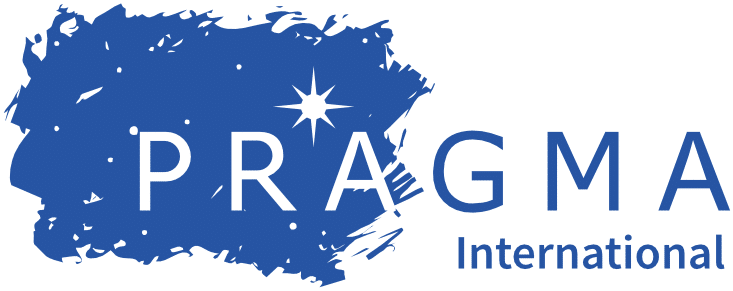This article is a summary of the presentation delivered by Charles Fisher, head of KHQ Lawyers’ Food & Beverage team, about the laws and regulations that either help or hinder the development, marketing and sale of healthier and innovative food products in Australia and New Zealand.
So… why am I listening to a lawyer about making and marketing healthier food?
I am not a nutritionist or a dietitian or a chef (although I do love to cook). But after 13 years of reviewing the recipes and marketing of thousands of products destined for the Australian and New Zealand markets, one thing has become very apparent to me. Innovation in food products – particularly innovations intended to provide nutritional or health benefit – are often those that trip over regulatory obstacles while also at the same time fail to truly take advantage of the marketing opportunities presented by Australia and New Zealand’s food regulatory framework.
And that’s why you are listening to a lawyer today: so that your innovation is allowed on the market, and you can actually tell your consumers why it is healthier… without the risk of your business being shut down overnight. Given I am a lawyer, I am not here to tell you what is actually “healthier” or not, just whether it is legal or not.
Why am I focusing on “healthier food” and not other aspects of food marketing? While the food industry continues to reel from supply chain disruption and inflationary pressures (which may temporarily change consumer purchasing behaviour), I think we are all aware of how much health-positioning of food products can drive sales.
In this talk, I am going to start with the bad news – that Australia and New Zealand are some of the strictest countries in the world when it comes to regulation of food fortification – and end on the good news: that Australia and New Zealand have one of the most flexible food-health marketing regimes in the world.
How do we make food healthier?
Occasionally, a completely new food product takes the market by storm. I wonder how many of us were drinking non-alcoholic beers or kombucha just five years ago? However, in my experience, most new product development of “healthier” food products focuses on taking existing products and either removing unhealthy aspects (eg salt or sugar reduction) or adding healthier ingredients (eg “rich in protein” or “packed with antioxidants”). This is of course ignoring aspects of products which are not related to health at all but consumers associate with being healthier; for example introducing an organic or plant-based alternative.
In both Australia and New Zealand, the key piece of regulation that controls what you can and cannot add to food is the Australia New Zealand Food Standards Code. And the Food Standards Code does not have a lot of rules around removing unhealthy aspects of food. In terms of regulatory obstacles, there are far more prohibitions against adding substances to food than taking things out. For example, there are very few barriers to reducing fat content in a product (unless you are product like ice cream whose very regulatory definition includes a minimum fat content) but there are many many restrictions on what vitamins and minerals you can add to food.
Therefore, in this talk I am going to focus on the two key prohibitions against adding healthier ingredients to food; namely the prohibition against nutritive substances and novel foods.
What’s the difference between a nutritive substance and a novel food?
Both nutritive substances and novel foods are banned for use in food unless the Food Standards Code expressly says that they are allowed in there. So it’s really important to know whether the substance you want to add to your food to make it healthier is allowed to be in there.
A nutritive substance is something that is added to food for a nutritional purpose and has been refined, synthesised or concentrated. The Food Standards Code expressly calls out vitamins, minerals and amino acids (but expressly excludes some prebiotic fibres such as GOS and FOS) as substances that can be used as nutritive substances.
The trick with determining whether a substance is being “used as a nutritive substance” or not is to know how concentrated is too concentrated. When does something stop being a traditional food ingredient and become a potential nutritive substance? For example, milk components such as caseinates and whey protein are referenced throughout the Code as not being regulated as nutritive substances, despite being refined and often added to foods for a nutritional purpose. However, when the Advisory Committee on Novel Foods (ACNF) considered a further refined substance – namely a bovine protein fraction – the ACNF took the view that this like was a nutritive substance.
Then we have the painful example of lactoferrin (which I have written about in greater detail here), another milk protein that has associated health benefits. The ACNF had previously given industry confidence that it was neither a nutritive substance nor a novel food (which I am about to discuss) and so many companies are currently on the market with products containing lactoferrin. But then one single company applies to have lactoferrin added to infant formula “as a nutritive substance” and (if this application to change the law is successful) it will have the inadvertent effect of banning lactoferrin in every other category of food – it will suddenly be regulated as a “nutritive substance” and not as a traditional food ingredient.
Speaking of “traditional food ingredients”, there is no legal definition as to what one is. But there is a definition of a “non-traditional food” which is simply a food with no history of consumption in Australia or New Zealand. And that’s history of consumption as food, not in traditional medicines. Think of all the opportunities presented by First Nation food traditions where the history of consumption can be measured by the millennia.
As soon as you do not have a history of consumption (which most innovative substances will not have), then you risk being a “novel food”. A “novel food” is a non-traditional food which needs its safety assessed by Food Standards Australia New Zealand (FSANZ) before it can be added to food. In other words, a market pre-approval process is triggered by safety concerns.
Unlike nutritive substances, novel foods do not have to be concentrated or refined. However, you can take a traditional food and extract from it a substance that could be regulated as a “novel food”. For example, apple polyphenols were considered by the ACNF to present no safety concerns when added in small quantities to food and thus were a non-traditional but not novel (ie permitted) food. But when those same apple polyphenols were highly concentrated such that we had no evidence as to whether they were safe or not, the ACNF found them to be “novel” and thus prohibited.
The key takeaway from this talk: use traditional food ingredients
If there is one thing you should all take away from this talk, it is that the easiest regulatory path to making food healthier is to add traditional food ingredients. That is:
- Foods with a history of consumption as food in Australia or New Zealand;
- That are not selectively concentrated or refined; and
- That present no concerns of public health and safety.
Walking around the Fine Foods floor, I have seen many products that likely have prohibited ingredients added to them because they are highly refined or concentrated (such as vitamins or minerals) or contain novel foods (like Lion’s Mane mushrooms or yerba mate extract among many others).
These same products could offer the exact same health proposition to consumers by using traditional food ingredients instead. Yes, food ingredients are more expensive than isolated nutritive substances. Yes, they can be less technologically consistent. Yes, they can have negative impacts on shelf life. But they are allowed in the food.
Think of how many products out on the floor right now that have probiotics, prebiotics or adaptogens, that do not have to be concerned from day to the next about their next shipment being prevented from entering Australia or appearing on the ACNF’s list of novel foods.
Plus, traditional food ingredients can often be marketed as “natural” or as a “superfood” etc.
Speaking of marketing…
Australia and New Zealand are some of the only countries in the entire world that allow food companies to self-substantiate health claims on behalf of food products (as opposed to requiring regulatory approval of each and every claim) so long as the food product in question meets a nutritional profile assessing the product as being “healthy”.
This flexibility is incredible, but does need to be supported by a systematic scientific review and a notification to FSANZ. Therefore: a flexible system to making health claims, but one which requires investment.
The main regulatory risk to avoid is to make sure that your claim (or your product’s presentation) does not result in regulatory scrutiny for being too “therapeutic”. While the Food Standards Code definition of “therapeutic” is quite clear, the definition of “therapeutic” claims is much broader in the laws and regulations that empower Australia and New Zealand’s medicine regulators.
But in my experience, most food consumers do not want their food marketed as medicine. They just want their food to be better for them. They want “vitality”, “boost”, “bounce” or “chill”; broad wellbeing claims which are unlikely to be therapeutic and might not even be health claims for that matter.
Even if they are health claims, if you do the systematic review and notify FSANZ, this claim could be the unique selling proposition that sets your product apart in the market. You ought to be able to quantify the sales bump you should get from making such a claim and thus be able to do a return on investment calculation on conducting the systematic review.
If that investment is not justified or your product does not meet the nutritional profile, remember that there are other categories of health marketing outside of health claims that are still permitted. For example, nutrition content claims – claims that just mention the presence of a nutrient but make no inference as to what it does – are regulated very differently to health claims. You may be able to make all sorts of claims about the presence of your traditional food ingredients and how nutritious they are without making any claim as to what they do to the human body.
So if you need help…
KHQ Lawyers is here to help you classify your innovative substance, ingredients or end food product under food regulations (or under pet food, cosmetics or medicinal regulations if needed). We can review your recipes and marketing for compliance and/or risk. We can help compile your applications and self-substantiation dossiers for the ACNF or FSANZ. Plus, as a full-service law firm, we can help on any of your non-food legal needs including intellectual property, corporate/commercial support, tech issues, tax, workplace relations, and more.
Feel free to contact us at food@khq.com.au for a free quote.








